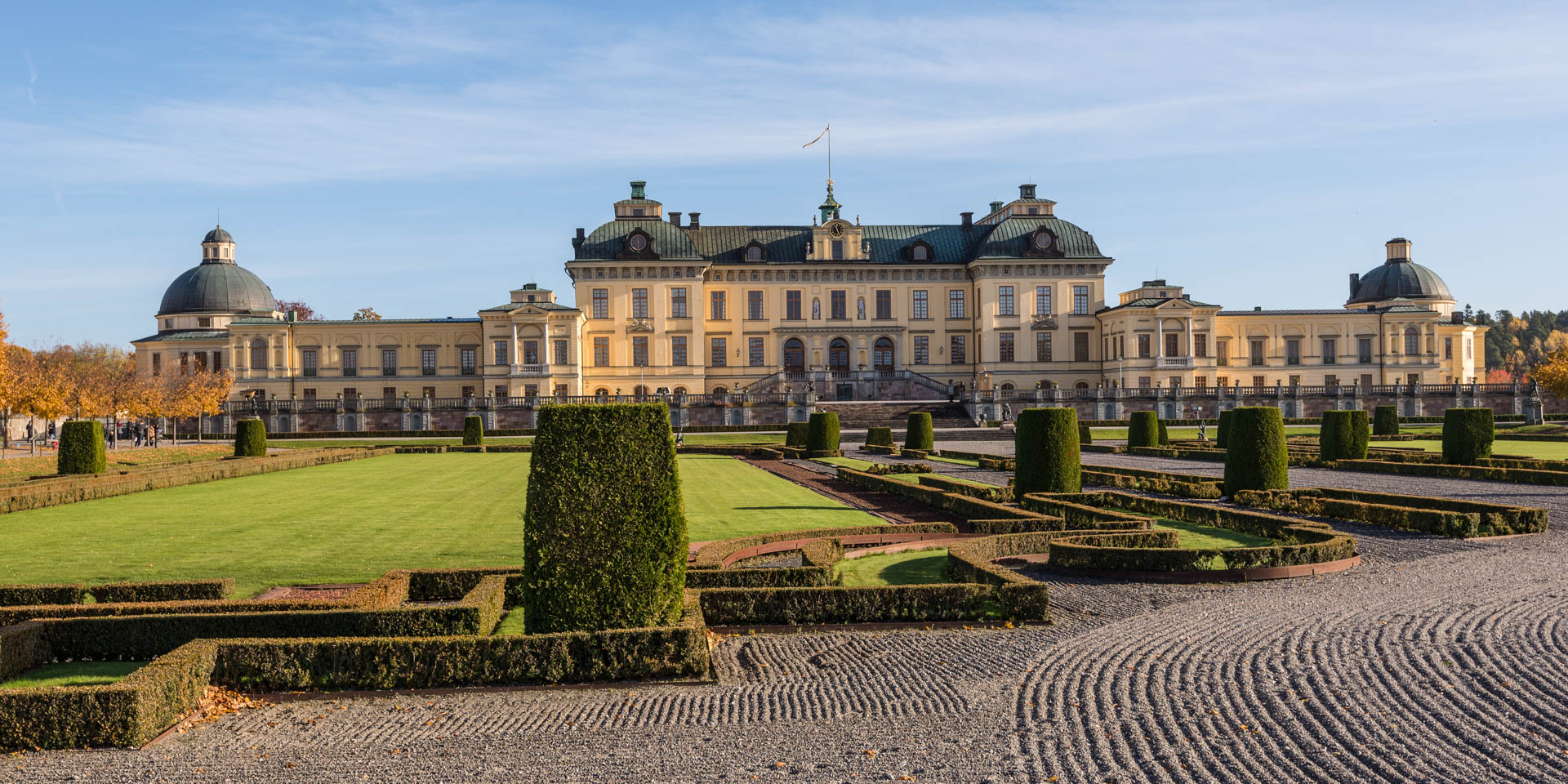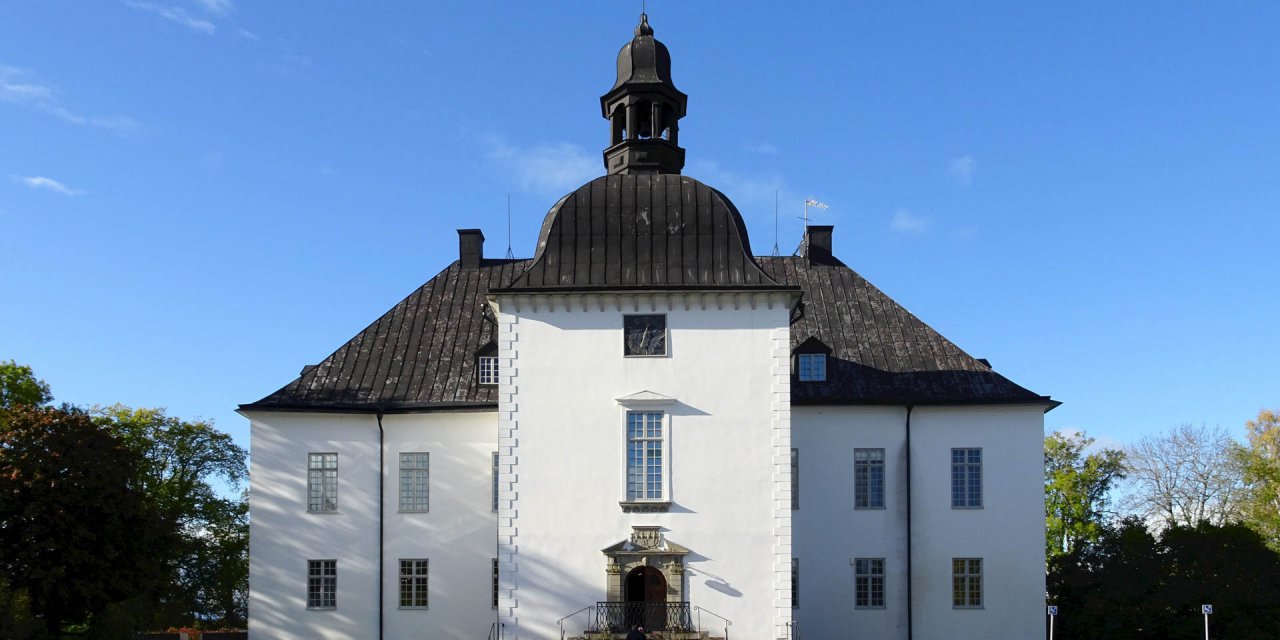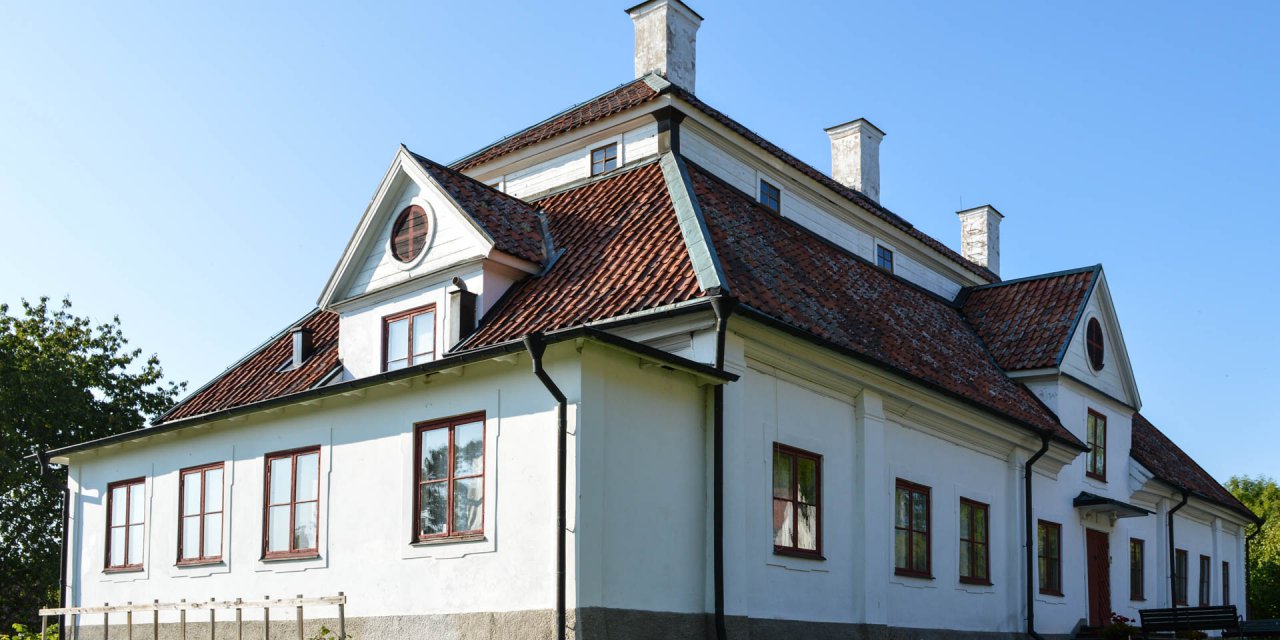

Drottningholms Slott
Royal palace Drottningholm
One of the most beautiful castles in Sweden, the royal palace Drottningholms Slott, is located on the island Lovön in Lake Mälaren, part of the municipality Ekerö, only a few kilometres west of Stockholm.
Drottningholm Palace was built in the second half of the 17th century on the model of French chateauxs and is considered the best-preserved royal palace in Sweden – and has been a UNESCO World Heritage Site since 1991. With the exception of the south wing, the main residence of the royal family, the majority of Drottningholms Slott is open for visits all year round.
The interior of Drottningholm Palace can be explored individually or on a guided tour in Swedish and English offered several times a day.
You can visit not only the palace itself, but almost the entire area belonging to the Drottningsholms Slott. These include in particular the magnificent baroque castle park as well as the large English Garden and other special buildings such as the unique historical Drottningholm Palace Theatre, the unusual Chinese Palace or the Museum de Vries as well as the Evert Lundquists Ateljémuseum.
The origin of Drottningholm Palace
Drottningholm was built under the direction of Nicodemus Tessin the Elder, the leading Swedish master builder of his time. Tessin succeeded in creating one of the most outstanding early baroque works in Sweden. Especially in the construction of the staircase he used all of his creative skills and designed the most elaborate and luxurious object of his entire career.
In the course of history, the various royal lords of the castle have left their more or less distinctive footprints in the sense of the furnishings of the palace, so that Drottningholm Palace also resembles a journey through time and through different stylistic epochs.
Commenced with the owner, the queen dowager Hedwig Eleonora of Holstein-Gottorp (1636 – 1715). In addition to the baroque palace building, this also includes her breathtakingly magnificent bedroom, which is considered one of the most beautiful baroque rooms in Sweden, followed by the adjoining audience hall, the so-called Ehrenstrahlsalongen. Furthermore, the already mentioned staircase, the palace church and the strictly formal baroque garden of the palace park.
The baroque garden is equipped with numerous sculptures, making it the oldest sculpture park in Sweden. At the time of Hedwig Eleonora there were 28 free-standing sculptures, many of which were made by the famous Dutch sculptor Adriaen de Vries (1556 – 1626). They were captured during the Thirty Years' War in Prague and during the war with Denmark at Fredriksborg Castle. Today, copies of these sculptures can be found in the baroque garden, while the originals are in the Museum de Vries north of the castle grounds.
Changes over time
The second queen who decisively influenced Drottningholms Slott was Louisa Ulrika of Prussia (1720 – 1782), who received the palace in 1744 as a wedding present for her marriage to King Adolf Frederick. She brought the rococo style into the furnishings of the palace, particularly clearly visible in the example of the luxurious Green Salon and the Green Cabinet.
At the same time, the palace became a meeting place for the elites of culture and natural science who surrounded the versatile queen. Among other things, she had the palace theatre built and the impressive palace library furnished. The pretty Chinese castle, built between 1763 and 1769 in the south-western part of the castle park, also dates from her time.
The third member of the alliance, who played a decisive role in the present appearance of Drottingholm Palace, was King Gustav III (1746 – 1792), known under the nickname Theatre King. He designed the large English Garden north of the baroque garden, which was completed by landscape architect Fredrik Magnus Piper after the early death of the monarch according to his drawings. Gustav III also led the palace theatre to its heyday, wrote his own plays and stood on its stage as an actor himself.
Visitor information
The palace itself is very difficult or even inaccessible for disabled persons and wheelchair users, as there is neither a lift nor ramps. In order to protect the sensitive and valuable equipment, baby carriages may not be used inside the castle. Dogs, with the exception of assistance dogs, are also not allowed in the castle.
The visitor centre of the palace with a café-restaurant and souvenir shop is located in the white mansion Karamellan, on the lake side of the palace. The shop is characterised by the fact that, in addition to typical souvenirs, it offers a selection of high quality items related to the palace. These include copies of historical porcelain dishes, drinking glasses, jugs, trays or table linen, some of which are limited editions.
Drottningholms Slott: Opening hours & admission
Opening hours
Monday – Sunday: 10:00 – 17:00
Monday – Sunday: 10:00 – 16:00
Admission
Last update: 07/2022 | Errors and omissions excepted.



